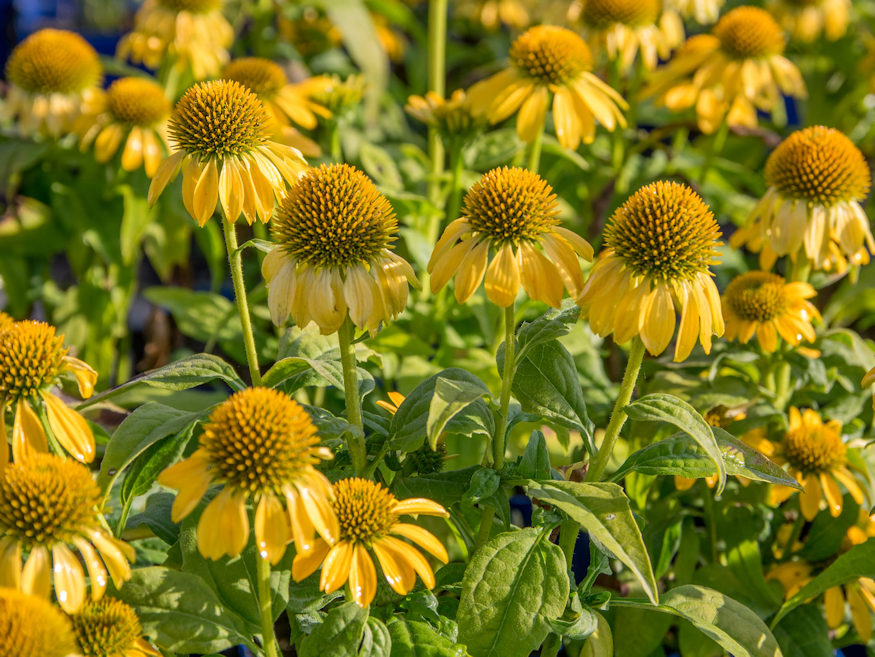Are you a novice gardener seeking to add beauty and charm to your outdoor space? Look no further than coneflowers. In this article, we’ll delve into the world of coneflowers, exploring their effortless cultivation, stunning blooms and the joy they bring to any garden, making them the perfect choice for beginners.
Coneflowers (Echinacea) are beautiful and relatively easy to grow perennial plants that are native to North America. They are known for their distinctive cone-shaped flower heads, which are surrounded by colorful petals. The large, daisy-like flowers add a vibrant and charming touch to any garden. Here’s some information to get you started:

Flower Colors
Coneflowers are prized for their beautiful and eye-catching blooms. They come in a variety of colors, including shades of pink, purple, white and yellow, allowing you to choose the ones that best complement your garden’s aesthetic. The most common species, Echinacea purpurea, typically has purple-pink flowers, but hybrid varieties have expanded the range of colors available.

Planting Time
Coneflowers can be planted in the garden in spring or fall. If you’re starting from seeds, it’s usually best to start them indoors about 8-10 weeks before the last expected frost date, and then transplant them outside when the weather is consistently warm. If you prefer to plant them as young plants, you can do so after the danger of frost has passed.

Main Benefits
Ornamental Value
Coneflowers add a splash of vibrant color to any garden. Their distinctive flower heads and attractive petals make them a favorite among gardeners.

Long Bloom Period
Coneflowers have a long flowering season, typically from summer through fall. This extended bloom period ensures that your garden will have a continuous display of colorful flowers, adding visual interest and beauty throughout the growing season.

Hardy and Low-Maintenance
Coneflowers are known for their resilience and adaptability. They are generally low-maintenance and well-suited for beginner gardeners. They are hardy perennials that can withstand a range of weather conditions and soil types. Once established, they require minimal care and can tolerate drought, making them an ideal choice for gardeners who are just starting out.

Wildlife Attraction
Coneflowers are a magnet for pollinators such as butterflies, bees and other beneficial insects. They provide a source of nectar and pollen, making them a valuable addition to pollinator-friendly gardens. By planting coneflowers in your garden, you can create a haven for these beneficial creatures, contributing to the overall health and biodiversity of your garden ecosystem.

Cut Flowers and Arrangements
Coneflowers make wonderful cut flowers due to their striking appearance and long-lasting blooms. You can bring their beauty indoors by creating floral arrangements or simply placing them in a vase to enjoy.

Medicinal and Herbal Uses
Coneflowers have a rich history of medicinal use, particularly Echinacea purpurea. Some people believe that extracts from the plant’s roots or flowers can boost the immune system and provide other health benefits. However, it’s important to note that scientific research on the effectiveness of Echinacea as a herbal remedy is still ongoing.

Caring for Coneflowers
When caring for coneflowers, it’s important to provide them with well-draining soil and a sunny location. Regular watering is essential during the establishment phase, but once they are established, they can tolerate drier conditions. Deadheading (removing spent flowers) can encourage continuous blooming.
Remember, coneflowers are perennials, which means they will come back year after year, providing you with long-lasting beauty in your garden.
In summary, coneflowers are an excellent choice for new gardeners due to their hardiness, low-maintenance requirements, attractive blooms and benefits for wildlife. Whether you want to create a visually stunning garden, attract pollinators or explore their potential medicinal uses, coneflowers offer a multitude of uses as a garden plant. Enjoy the beauty and benefits they bring to your garden!









